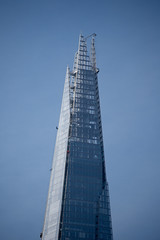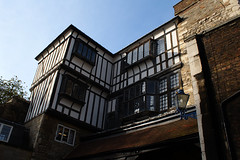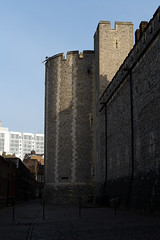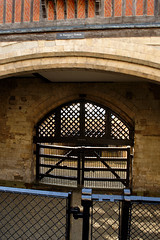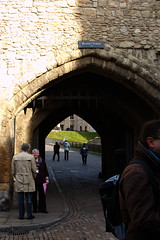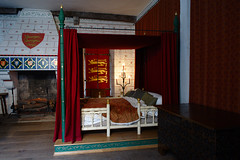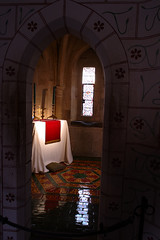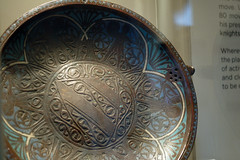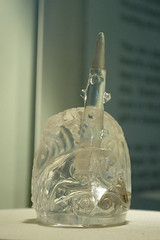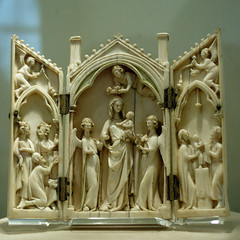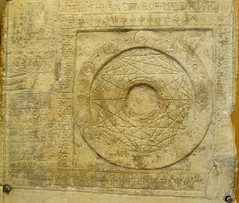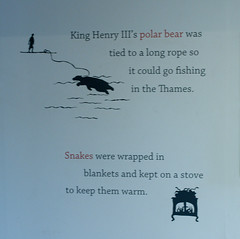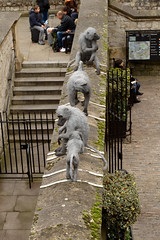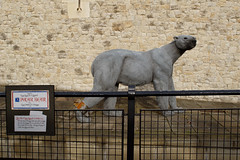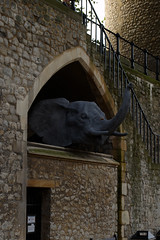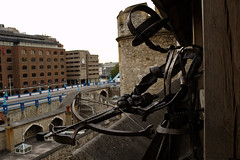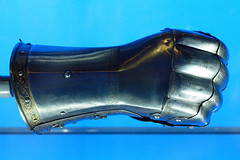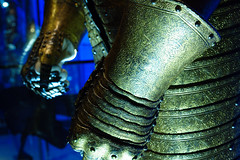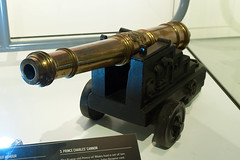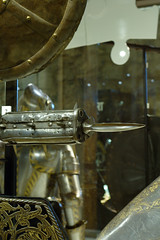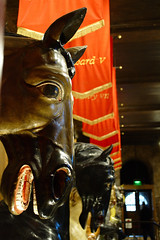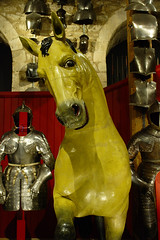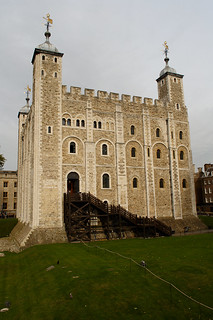The printing press was invented in Germany around 1440, and by 1476 had even been brought to the relative backwater of England, by a man named William Caxton. The guests on the episode of In Our Time that talked about this were Richard Gameson (University of Durham), Julia Boffey (Queen Mary, University of London) and David Rundle (University of Oxford). I’d heard of Caxton before, because he’s the subject of one of the mini biographies in a book I read earlier this year (“Renaissance People” ed. Robert C. Davis & Beth Lindsmith), but didn’t know much about him.
He was in his 40s by the time he became a printer – prior to that he was a mercer, that is a merchant involved in the cloth trade. He was clearly of some importance, he spent time in Bruges (in Burgundy) as the Governor of the Company of Merchant Adventurers of London in Bruges (I think I have the title right) – basically the representative of all the London merchants to the officials in the city & to the other trading nations there. They got side-tracked when talking about it, so I’m not quite sure why Caxton left Bruges and why he changed career, but in his 40s that is what he did. Moving first to Cologne where he got involved in the new trade of printing, then he went back to Bruges (probably) and proceeded to set up shop printing not just Latin & French books (which would have an international readership) but also books in English for import into England (and pretty much nowhere else, because English wasn’t an international language).
He then moved to Westminster, where he set up shop as the first printer in England (and he remained the only English printer for some time, other printers were of continental origin). They spent a while discussing why Westminster and not London (and as always I was momentarily taken aback that they aren’t the same place – I know this, but I have to remind myself every time). Partly it seems because there was already a book trade in the city of Westminster, so selling print books as well as manuscripts was in some ways more of the same and your customers would already be there. Partly because Westminster had the Abbey and all the religious related printing needs (like indulgences). Partly because the niche that Caxton was trying to fit into was more Westminster oriented than City of London oriented – he wasn’t doing legal documents and such, or pamphlets, he was primarily printing books. And partly because there were taxes and restrictions on who could produce books in the City of London, so setting up shop outside gave him more freedom (and lower bills).
So Caxton’s clientèle were primarily the religious institutions and the nobility – and a large part of what he printed was books in English, which was unusual. He is most remembered for his editions of Chaucer’s Canterbury Tales, and they spent a while talking about that on the programme. Caxton is credited with helping to cement Chaucer’s status as the première English writer, but they were pointing out that this wasn’t a new thing that Caxton did, he was very much building up an existing reputation (partly as a way of marketing his editions of the books).
Caxton is also credited with starting the standardisation of written English. But the guests on this programme were pretty clear that this wasn’t really the case – yes, printed books did do this (because you didn’t have local scribes copying texts with their local spelling, everyone bought the same edition) but Caxton himself didn’t really have much to do with it. They seemed clear that he did edit things, but was inconsistent within his own works. Also early printed books actually used the vagaries of spelling to their advantage, which I didn’t know before! So if it was more convenient to have a few letters more on a line to make the edges line up nicely then the typesetter would sprinkle a few “e”s on the ends of words, or double a letter or two. Or if you need some less, perhaps you’d take out a “u” or two.
A lot of what is known about Caxton comes from his editorial work, in particular the prologues & epilogues that he added to his books. They did stress, however, that these are often full of clichés so need to be taken with a large pinch of salt. He was clearly good at being a publisher/editor/printer though, because he didn’t go bankrupt which a lot of early printers did. This was due to the high start up costs (you need all the equipment) and because you needed to figure out how many copies of something you wanted in advance, guessing demand right could make the difference between staying in business or going bankrupt. Caxton clearly did, as his business was inherited after his death by his foreman, who gradually moved towards printing things for the legal trade and printing pamphlets. And after a while he moved the business to the City of London – to Fleet Street.
The three guests all seemed very enthusiastic about the subject, and all keen to have their say on every bit, but I did end up feeling a little sorry for Julia Boffey who got talked over more than once. She’d start making a point and one of the others would jump in and she’d be reduced to saying “yes, yes” while they talked.



